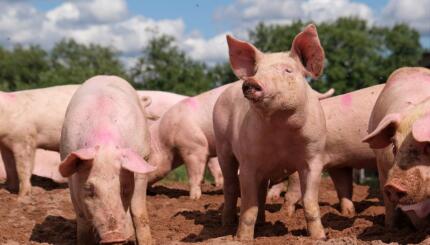Last week, the Copenhagen Zoo in Denmark killed a healthy two year-old giraffe named Marius. Zoo staff dissected Marius’s body in front of visitors, calling it “an educational program.” They stored Marius’s meat to be fed to large carnivorous mammals.
Without a context, this story is horrifying. In fact, zoo staff members have received death threats.
But there is a context, important in the world of zoos. Zookeepers responsibly try to prevent overpopulating a zoo or inbreeding a small herd. In the U.S., zoos rely on contraceptives, rarely killing healthy animals. European zoos, however, criticize American practice as unnatural and unhealthy in the long term. Thus, in Europe, the average professionally run zoo kills five large mammals per year.
From a Jewish perspective, should this context quell your horror? Not necessarily.
Giraffes, you may be surprised to learn, are kosher animals. Giraffes meet the Torah’s criteria for kosher mammals: they have split hooves and chew their cud. Many scholars say they are listed explicitly in Deuteronomy (14:5) by the Hebrew name zemer. To be fit for eating, a kosher animal must be killed with a cut to the neck; the giraffe’s long neck makes it very easy.
However, it’s just not socially acceptable in Jewish circles to eat this beautiful, exotic animal. When the ancient Israelites built their
mishkan
(portable desert sanctuary), they covered it with skins of an animal called in Hebrew the tachash. The exact meaning of this rare Hebrew word has confused scholars. Some say it is a mythical animal; others say it is a dugong from the Red Sea; still others say it is an African giraffe. The Talmud describes the tachash as a large, kosher, non-domesticated animal, with beautiful skin and a horn on its head.
Kosher animals ought to be treated with great respect—though often, in our world of factory farms, they are not. Our Torah’s account of the Exodus includes explicit mention of the sheep and cows who walked to freedom. In the book of Jonah, God asks the prophet, “Shouldn’t I care about a city with 120,000 people, and also many cattle?” Anthropologist Mary Douglas points out that only kosher animals were allowed to enter the Temple precincts; thus, they were in some sense part of a covenant of holiness. From an anthropological perspective, one particular kosher animal—the sheep—seems to emerge as Judaism’s totem animal. Our ancestors were shepherds; we still blow the shofar, a ram’s horn, to announce the New Year; observant Jews wear a
talit
and with
tzitzit
—woolen fringes.
Contrary to these values, people often treat food animals horribly. With a little interspecies imagination, an industrial farm looks like an overcrowded detention camp. You know the shocked question, “How could people treat one another like this???” Some animal activists answer, “We practiced on animals, and transferred the skills.”
Perhaps you remember the animated DreamWorks movie
Chicken Run
. Spoiler alert: a group of chickens escapes from a factory farm. The farm looks very much like your worst nightmare of a secret maximum-security military prison. If you have not seen the movie, do try to watch it. It’s actually funny and inspirational, not gruesome at all—but it does make you think twice about human-animal relations.
So, yes, be horrified. Be very horrified.
But do not lose hope. Instead, take action. Keep in mind a famous principle from the Talmud: “Whoever saves a single [human] life, it is as if they have saved a whole world.” When you save a life, you give life to a person’s future generations. You make it possible for the living person to help others. One life is connected to other lives in a great network, and one saved life means more than you can imagine.
Keep using interspecies imagination: Whoever saves one animal life, it is as if they have saved an entire world. When you adopt an animal from a shelter, choose vegetarian for a single meal, or sign a petition, you are a node in a network that changes the world. You help save one animal life; you demonstrate a more respectful way of living with other species; you undercut lessons of dehumanization; you influence human behaviour. Torah teaches that animals and humans are intertwined, practically and psychologically. Think about how you can make use of that teaching.
Traditional Jewish memorial prayers say: in honor of the one I remember today, I pledge
tzedakah
—righteous deeds and charitable donations. If you are one of Marius’ many mourners, what action will you take?
kosher
Pronounced: KOH-sher, Origin: Hebrew, adhering to kashrut, the traditional Jewish dietary laws.
Talmud
Pronounced: TALL-mud, Origin: Hebrew, the set of teachings and commentaries on the Torah that form the basis for Jewish law. Comprised of the Mishnah and the Gemara, it contains the opinions of thousands of rabbis from different periods in Jewish history.
Torah
Pronunced: TORE-uh, Origin: Hebrew, the Five Books of Moses.



